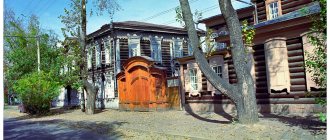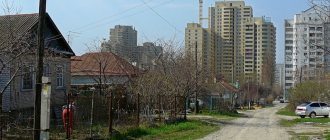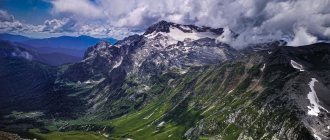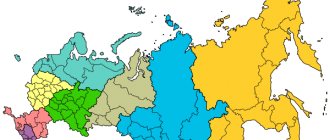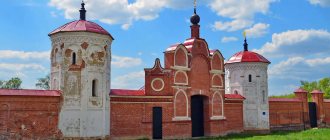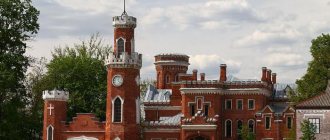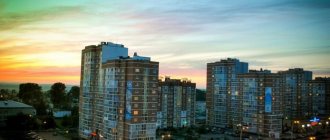Kaliningrad region is the 43rd region of the Russian Federation. It is located in the extreme west of the country, completely separated from the rest of the constituent entities of the Russian Federation by the territories of other states (Lithuania in the north and east, Poland in the south). In the west and southwest it is washed by the waters of the Baltic Sea and the Curonian and Kaliningrad Lagoons included in it. It is part of the Northwestern Federal District.
The area of the Kaliningrad region is 15.1 thousand km2. The length of the border with the Republic of Lithuania is 280.5 km, with the Republic of Poland - 231.98 km. The length of the Baltic coastline is 183.56 km. The Kaliningrad region is one of the smallest territories in Russia, but in terms of population density (63 people per square kilometer) among the territories and regions, it ranks third and is second only to the Krasnodar Territory and the Tula region.
The population of the Kaliningrad region is 1,018,624 people (according to data from the Federal State Statistics Service). The administrative center is the city of Kaliningrad (formerly Koenigsberg - founded in 1255). The nearest regional center of Russia is Pskov, located 800 km from Kaliningrad, 800 km from Kaliningrad, and 1289 km from Moscow from Kaliningrad.
Kaliningrad is connected to the open sea by a shipping canal built at the beginning of the 20th century. The Kaliningrad port is the only ice-free port on the Baltic Sea.
The longest rivers in the region: Pregolya - 123 km, Neman - 115 km.
The largest lake is Vishtynetskoye - 18 square meters. kilometers. The highest altitude above sea level is the Vishtynets Upland, 242 meters.
Large cities in the region:
- Sovetsk (formerly Tilsit)
- Chernyakhovsk (formerly Insterburg)
- Baltiysk (formerly Pillau)
- Gusev (formerly Gumbinen)
The region includes 22 urban districts. The urban population makes up 77.7% of the total population.
Sights of the Kaliningrad region
As for attractions, there are plenty of them in the region. Europe, Germany in particular, left a huge mark. Prussian houses with parks, ancient fortresses have been preserved everywhere, and Catholic churches in some areas are more common than Orthodox ones. Each city has two names, German and Russian.
The sights of the Kaliningrad region are mainly concentrated in the capital of the region - Kaliningrad. There are many museums to suit every taste, architectural and historical monuments, and cultural sites.
What holiday is it today?
09 February 2022, Wednesday
Today are holidays and events: Aeroflot's birthday International Dentist Day Memorable date in Russian military history: The feat of the cruiser Varyag Tomorrow: Diplomat's Day
Today is an Orthodox holiday: Transfer of the relics of St. John Chrysostom, Archbishop of Constantinople... Tomorrow: St. Ephraim the Syrian. Venerable Ephraim of Novotorzhsky. Venerable Ephraim of Pechersk, Bishop of Pereyaslavl. Venerable Theodosius of Totem, the head and founder of the Spasosumorin monastery...
Today is a national holiday: Chrysostom's Fire... Tomorrow: Ephraim's Day...
Seasons
Seasons, four periods of the year (spring, summer, autumn and winter) characterized by certain average temperatures. The period during which the Sun passes through one of these sectors is called the season. Spring in the Northern Hemisphere and autumn in the Southern Hemisphere begin when the Sun passes through the initial circle of declination and its right ascension is 0° (vernal equinox). Summer in the Northern Hemisphere and winter in the Southern Hemisphere occur when the sun's right ascension is 90° (summer solstice). Autumn in the Northern Hemisphere and spring in the Southern Hemisphere begin when the sun's right ascension is 180° (autumnal equinox). The beginning of winter in the Northern Hemisphere and summer in the Southern Hemisphere is considered to be the winter solstice, when the direct ascension of the Sun is 270°... Next: Seasons. Russian folk calendar. Monthly words...
Folk calendar about every day
Every day one season always replaces another and this determines a person’s way of life. In connection with this, a folk calendar was formed in which there were practically no nameless, unmarked days. Every day was special, had its own purpose. All this was determined by climate conditions and astrological phenomena.
A calendar is a system for counting periods of time. The first calendars arose a long time ago, in ancient times, because there was a need to measure time. The word calendar comes from the Latin words caleo - to proclaim and calendarium - debt book. This is due to the fact that in Ancient Rome the beginning of each month was especially proclaimed, and because it was customary to pay debts on the first day of the month. Different peoples counted time differently. Some calendars are based on the changing phases of the moon - lunar calendars; in others - the change of seasons - sunny; in others, the length of the year was coordinated with the change of seasons, and the counting of months was associated with the phases of the Moon. Such calendars are called lunisolar.
In Rus', the calendar was called a monthly calendar. Every day, the month book covered the entire year of peasant life, “describing” day by day, month after month, where each day had its own holidays or weekdays, customs and superstitions, traditions and rituals, natural signs and phenomena. The cyclical nature of the calendar is reminiscent of human life, where spring is youth, summer is heyday, autumn is the time of harvesting fruits (it’s good if there are some, otherwise you can live your life without collecting fruits), winter is the time of wisdom and peace. This cyclicality and rhythm determined the way of life of the farmer. The folk calendar was an agricultural calendar, which was reflected in the names of the months, folk signs, rituals and customs. Even the determination of the timing and duration of the seasons is associated with real climatic conditions. Hence the discrepancy between the names of the months in different areas... Next: Folk calendar...
Kaliningrad on the map
Let's start with the fact that this city is the administrative center of the Kaliningrad region. The population of the city is about 500 thousand people, and the region as a whole is slightly more than a million inhabitants.
Let's take a look at the map of Russia. That little pink piece over there, torn off from big Russia, is the Kaliningrad region. The westernmost region of the Russian Federation and, at the same time, not having common borders with it. Here is the westernmost point of Russia, and in general, no matter what you do, everything will be the most western.
Kaliningrad region on the map of Russia
Let's take a closer look. When approaching, it is clear that the Kaliningrad region is located in Central Europe, bordering Poland, Lithuania and washed by the Baltic Sea.
Fishing calendar for every day
The fishing calendar should not be taken as an absolutely indisputable truth. Fish biting is greatly influenced by a whole range of natural factors, as well as the influence on the nature of man himself. You must not forget that the fish’s bite depends and is determined not only by the calendar dates and biological cycles of their life, reflected in the calendar, but also, no less, by the state of their habitat; the bite also depends on weather conditions: air and water temperatures, cloudiness, wind direction and strength, etc... Next: Fishing calendar...
Museum of the World Ocean
The Museum of the World Ocean in Kaliningrad is an excellent museum complex, very interesting for both children and adults. It would not be an exaggeration to say that this is probably the best museum in Kaliningrad and an absolutely must-see city attraction. Here you will find not only dry, informative exhibitions “under glass”, but also a lot of things to “touch”, including real ships that you can admire from the outside and inside. Moreover, some of them are famous throughout the world for their glorious history.
The main building of the museum is located on the Peter the Great embankment. There are also the museum’s general ticket office, a souvenir kiosk and a buffet dining room with set lunches and baked goods. A lighthouse with an observation deck rises above the building, from where you can wonderfully see the panorama of Pregolya and the cathedral.
The exhibition buildings "Warehouse" and "Maritime Koenigsberg" are located a little further along the embankment from the main one. These buildings, dating from the mid-19th century, house exhibitions dedicated to the life and history of Kaliningrad as a port city. In addition, two branches of the World Ocean Museum are open at the Royal Gate ("Grand Embassy"), as well as at the Friedrichsburg Gate ("Ship Resurrection") and on the adjacent site. The last branch boasts a rather interesting collection of traditional boats of different nationalities, plus a bronze beggar cat in one of the barred windows. On holidays, all kinds of entertainment are held in the open area near the gate.
On the main territory of the complex there are other attractions that are attractive to tourists: “Kant’s bench” (a perfect remake: the philosopher did not sit on it) and the sculptural fountain “Putti” (officially “Puttenbrunnen”) with cute angels. But it is much more interesting, while walking around the museum, to examine and touch the real ships and their parts displayed on the embankment: diving apparatus, bathyscaphes, anti-aircraft gun mounts, torpedoes, turrets.
And even more interesting, of course, is to board one of the ships moored along the promenade, which also belong to the museum. This is, for example:
- The research vessel “Cosmonaut Viktor Patsayev” is the only space communications ship in the world that has been turned into a museum.
- polar icebreaker "Krasin", former "Svyatogor", the second domestic Arctic vessel.
- combat submarine B-413,
- the Foxtrot project, the only pre-nuclear submarine remaining in Russia and even preserved in the same condition in which it was withdrawn from the country's Navy.
- fishing logger SRT-129, which has served its purpose honestly.
And not only…..
The most beautiful places in the Kaliningrad region are the Curonian and Baltic Spit. Here you can endlessly admire the sea, dunes and forest.
Orthodox calendar about every day
Orthodox calendar: Orthodox, Church and Christian holidays.
The church year is an alternation of weekdays and holidays. On weekdays, a person is called to work “by the sweat of his brow to earn his bread.” Holidays are given in order to feel liberation, to rise above the bustle and routine of the world, to feel involved in the highest of worlds, “where there are no illnesses, sorrows and sighs, but endless life.” Since ancient times, holiday cycles have been associated with the seasons. The pagans associated them with the worship of the forces of nature, the cult of which in the Old Testament was replaced by gratitude to the Creator for the universe. And although the connection between holidays and the seasons has not completely lost its power, since God is present in everything, in the plant and animal world, in human works, it nevertheless faded into the background, giving way to a spiritual foundation built on the Sacred Scriptures. The history of Orthodox holidays dates back to the times of the Old Testament. Each of the Orthodox holidays is dedicated to the remembrance of the most important events in the life of Jesus Christ and the Mother of God, as well as the memory of saints... Next: Orthodox calendar...
Curonian Spit
One of the main attractions of the Kaliningrad region, included in the UNESCO World Heritage List. The border between Russia and Lithuania runs in the middle of the spit.
There are three villages on the Russian side:
- Lesnoy (closest to Zelenogradsk),
- Fishing
- Marine.
The most developed tourist infrastructure is in Lesnoy, although most people go to Kos to escape from civilization and be alone with nature.
Deserted places can be found here even in high season.
Main attractions on the Curonian Spit:
- Dancing Forest (trees with unusual trunks that inexplicably bend in space);
- height of Efa
- ornithological station (Spit is a natural migration route for birds; here they are ringed and their behavior is studied).
Where to eat: the choice of establishments is small. There are several cafes and restaurants in the villages of Lesnoy and Rybachy. In Rybachye you can also buy smoked fish. Someone praises the restaurant LAS Promenade OZ in Lesnoy (Vzmorya, 1), but this is just a restaurant. You can go to the exquisite Altrimo in Rybachy (Pogranichnaya, 11), also a restaurant.
Where to stay on the Curonian Spit: hotel "" with a cozy restaurant, glamping (approximately open from May to October), tourist complex (chalets and rooms, there are places for tents), numerous sanatoriums and boarding houses.
Russian folk calendar for every day
The word “sign” comes from the word “notice”, i.e. observe. As a result of observing what happens around a person every day, he accumulates life experience. This knowledge was passed down from generation to generation, carefully preserved and people trusted it as a sacred book. Many signs have come to us from the depths of centuries without losing their knowledge. Each of us is free to choose: to dismiss all this as an absurd superstition or to take a closer look at the signs and take the centuries-old experience of generations more seriously. Most of us, when taking exams, ask them to scold them, boasting about some kind of good fortune or luck, spit so as not to jinx them or knock on wood, take a detour if a black cat crossed the road, are afraid of the number 13 and much more. And who among us does not have lucky things, numbers? Who has never resorted to the help of fate at least once in their life, who has not believed in secrets? It’s as if everything connected with signs is hidden somewhere deep in our subconscious. Often we remember them mechanically, unconsciously, or just as a joke. But, undoubtedly, the signs contain a lot of accurate knowledge and practical wisdom of our ancestors. They cover all the characteristic, often difficult to perceive, natural phenomena. Signs have preserved a lot of what was in old folk holidays and customs; they help predict the weather, grow crops... Next: Folk signs...
Where to stay in the Kalingrad region
If you want to visit different places in the Kaliningrad region, then for excursions it is most convenient to stay directly in Kaliningrad, and from there move to destinations that interest you.
Recommended route
Visit:
- dilapidated and not so ruined castles and churches of the Kaliningrad region,
- Amber plant and “Museum of Russian superstitions” in Yantarny,
- see German architecture and the promenade in Zelenogradsk,
- charming houses of the former Rauschen (now Svetlogorsk).
And of course, you should definitely visit the capital of the region - Kaliningrad and go to the Curonian Spit to enjoy the amazing virgin nature, wide dunes and the frightening Dancing Forest.
Save it for yourselfPrint
0
Author of the publication
offline 2 hours
Holiday calendar, dates and events of the year
All state and professional holidays in Russia, including significant World and International holidays, and other equally interesting holidays and events about every day.
The holiday has always kept pace with the history of mankind. Social time can be divided into three types: everyday life (weekdays), weekends and holidays. Everyday life is a series of practices repeated day after day and every day (work). Weekends are regular breaks from the rush of everyday life. It is believed that on weekends a person should restore his strength after working days. Day off, non-working day. A holiday is a day of celebration established in honor or in memory of someone or something. A day or series of days celebrated by the church in memory of a religious event or saint... Next: Calendar...
What documents are needed to enter the Kaliningrad region?
As you have already understood, the Kaliningrad region is sandwiched between two Schengen countries (Lithuania, Poland) and the Baltic Sea. Therefore, if you want to come to Kaliningrad by land : by train or by car, then firstly you will need a foreign passport, and secondly, you will have to get a Schengen visa or a special transit document to travel through Lithuania.
However, if you arrive by plane from Russia, you don’t need anything, an internal Russian passport is enough.
Also, an internal passport will be enough if you travel to Kaliningrad by sea from St. Petersburg. True, this route is currently used for freight transport, but there is no regular and affordable passenger service by sea. We advise you to focus on the first two options.
Here is a complete article about how to get to Kaliningrad: by train, plane, car.
Prayer book, Orthodox prayers for every day
Prayer is the most powerful means for healing all illnesses - both physical and mental. Prayers can be laudatory or grateful, petitionary and repentant. If we have offended God, sinned, we must ask Him for forgiveness, that is, repent. Such prayers are called repentant prayers. If everything is fine with us, if we and our loved ones are healthy and prosperous, if we have a place to live, something to wear, something to eat, we must glorify and thank God for this. Such prayers are called praise or thanksgiving. If some misfortune, illness, trouble or need happens, you need to ask God for help. Such prayers are called petitionary... Next: Orthodox prayers...
Zodiac, astrological, eastern calendar. Zodiac signs
In ancient times, to establish the calendar, priests used knowledge of the positions of all the planets. Before the reform of Peter 1, the New Year was celebrated on the Day of the Autumn Equinox. On this day, according to ancient legend, the most peaceful treaty was concluded between the Great Race (ancient Slavs) and the Great Dragon (ancient Chinese) and it was approximately 7518 years ago... For the ancient Slavs, the calendar month corresponded to the lunar cycle from new moon to new moon, taking into account such Thus, the relationship of the entire annual cycle with astronomical and natural phenomena. There was no coherent calendar system. The main natural phenomena are still considered to this day to be the days of the solar equinox and solstice - the Slavic holidays Maslenitsa, Kupala, Ovsen and Kolyada. But during the time of Peter 1, all ancient Slavic calendars were abolished and a new Western European calendar from the Nativity of Christ (Julian calendar) was introduced, while the beginning of the calendar was moved to January 1. The Julian calendar (old style) did not take leap days into account and accumulated one extra day every 128 years. After the October Revolution in 1918, the Gregorian calendar (new style) was introduced in Russia, according to which an amendment of 13 days was introduced. The calendar of the ancient Slavs was based on two planets: the Sun and the Moon. And now they don’t use anything at all. The calendar has become static. There is no such thing as the calendar, it turns out, resting on some planet. Nobody even knows about it. There are just some standard numbers, there are months and holidays. The calendar is based on the Sun and Moon. Why is this so? Because these two luminaries influence the Earth. The Earth revolves around the Sun, and the Moon revolves around the Earth. And these two luminaries create the atmosphere on the planet. From here the calendar is built... Next: Astrological calendar...
Kaliningrad region
The Kaliningrad region is located on the southeastern coast of the Baltic Sea and is the western region of the Russian Federation, completely separated from the rest of the country by the land borders of foreign states and international sea waters.
The region was formed in 1945 after the decision of the Potsdam Conference of the three great powers - the USSR, the USA, the UK - on the liquidation of East Prussia, the northern part of which went to the Soviet Union after the Second World War.
In 1946, on April 7, the Presidium of the Supreme Soviet of the USSR adopted the Decree “On the formation of the Koenigsberg region as part of the RSFSR,” and on July 4, its administrative center was renamed Kaliningrad, and the region - Kaliningrad.
In the north and east, for 280.5 km, it borders with the Republic of Lithuania, in the south, for 231.98 km, with the Republic of Poland, in the west, the region borders the 183.56-kilometer Baltic coast. The maximum length of the region from east to west is 205 km, from north to south - 108 km. From Kaliningrad to the Polish border is only 35 km, to the Lithuanian border - 70 km. The nearest regional center of Russia - Pskov - is 800 km from Kaliningrad, 1289 km from Moscow, 940 km from St. Petersburg.
The region includes 9 municipal districts, 6 districts and 7 urban districts. The urban population makes up 77.7% of the total population. The average population density is 63 people per 1 sq. km. The most densely populated areas are Gusevsky, Chernyakhovsky, Bagrationovsky, Nemansky urban districts and Gvardeysky district.
Most of the territory is lowland. In the southeast there is the Baltic ridge with heights of up to 230 m. Deposits of amber (one of the largest in the world), clay, gravel, rock salt, etc. The climate is transitional from marine to moderate continental. Average annual temperature is +8° C. Average temperatures in January are from -3 to -5 degrees C, in July +15-17 degrees C. Precipitation is about 700 mm per year.
The Baltic and Curonian sand spits are separated from the sea by two large desalinated bays - Kaliningrad and Curonian. Large rivers: Neman (with the Sheshupe tributary) and Pregolya (with the Lava tributary). Numerous lakes.
The region is located in the subtaiga (mixed forests) zone. Broad-leaved-dark-coniferous forests (oak, spruce, pine, birch, linden) occupy about 15% of the territory. In these forests there are brown hare, squirrel, marten, fox, roe deer, wild boar, etc. There are many birds. The waters are rich in fish: in the desalinated sea bays - bream, pike perch, smelt, eel; in the sea - herring, sprat, smelt, salmon. The Curonian Spit National Park is located on the territory of the region.
The Kaliningrad Bay is located on the southern coast of the Baltic Sea and is separated from the sea by the Baltic Spit, part of which is located in Poland, and at the coordinate 19° 38″ E. is the westernmost point of Russia. The Pregolya River flows into the Kaliningrad Bay, at the mouth of which Kaliningrad is located. The bay does not freeze in winter.
The Curonian Lagoon is a lagoon off the southeastern coast of the Baltic Sea. It is separated from the sea by the Curonian Spit and connected to the sea by the narrow Klaipeda Strait. Length 93 km, avg. width 17.3 km, depth up to 7 m. The Neman River flows into it. It freezes in winter.
The Curonian Spit is a sandy peninsula in Lithuania and Russia.
Length 98 km, width from 0.4 to 3.8 km. Characteristic are dunes up to 70 m high, mostly covered with forests (pine, black alder with an admixture of oak, linden, elm). On April 7, 1946, the Koenigsberg region was formed as part of the RSFSR. After the war, the city began to be populated at a rapid pace, and production was restored. But the city had a semi-closed status due to its strategic location. The city was practically closed to foreigners, except for occasional visits of friendship from neighboring Poland.
Dream books online, interpretation of dreams
A dream book is nothing more than an interpreter of dreams and dreams, a translator of dreams. Since ancient times, people have been using dream books; dreams have always been given great importance, and people have often noticed the prophetic properties of some dreams. The dream book can become your faithful assistant every day and throughout your life, thanks to the dream interpreter you can always make the right decisions, the dream book will help you resist temptations in time, and will warn you against wrong steps and frivolous actions. Further…
